
Sound Meditation
Sound meditation involves immersing oneself in the waves of calming and echoing sounds, usually while laying on a yoga mat with a blanket and pillows for added comfort, to promote a relaxed meditative state. The engaging combination of sound frequencies and vibrations help participants let go of distracting thoughts and physically unwind. Several studies have shown that sound meditation is helpful in reducing stress, fatigue, and some symptoms of depression. It is viewed as an affordable, non-invasive method to calm the nervous system that complements other approaches such as yoga and vagus nerve stimulation exercises.
The Benefits of Sound Meditation
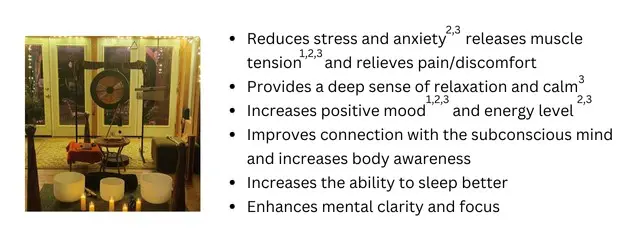
Current Theories in Research
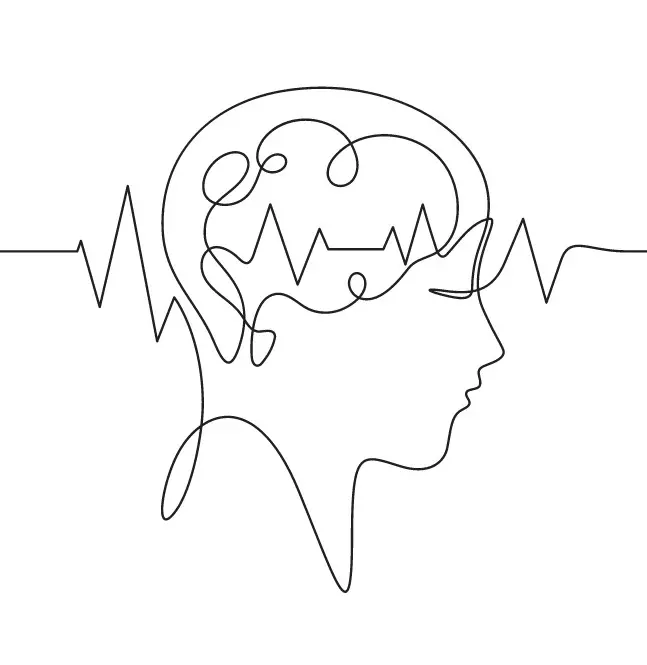
Changes Brainwaves
The physical vibration and sound frequency may elicit changes in brainwave states promoting deep relaxation found in theta waves (4-8 Hertz) found with light sleep and relaxation and delta waves (<4 Hz) found in deep sleep and meditation. Study points to a possible relationship between frequency and power emitted by live music in affecting human brainwaves (Hassan et al 2012).
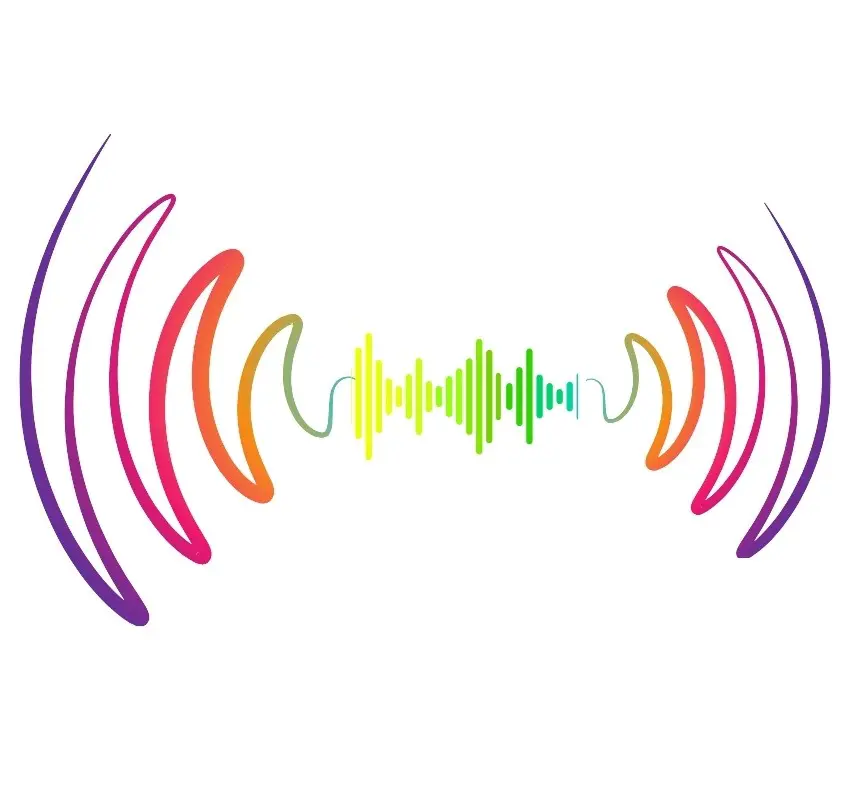
Creates Binaural Beats (BB)
Binaural beats can influence brainwave states. When the brain perceives a different frequency in each ear it creates a third frequency known as a BB when synching the differences. The hertz of the BB is the difference between the two perceived by each ear (e.g. 20 Hz in one ear, 15 Hz in the other ear results in a BB at 5 Hz).
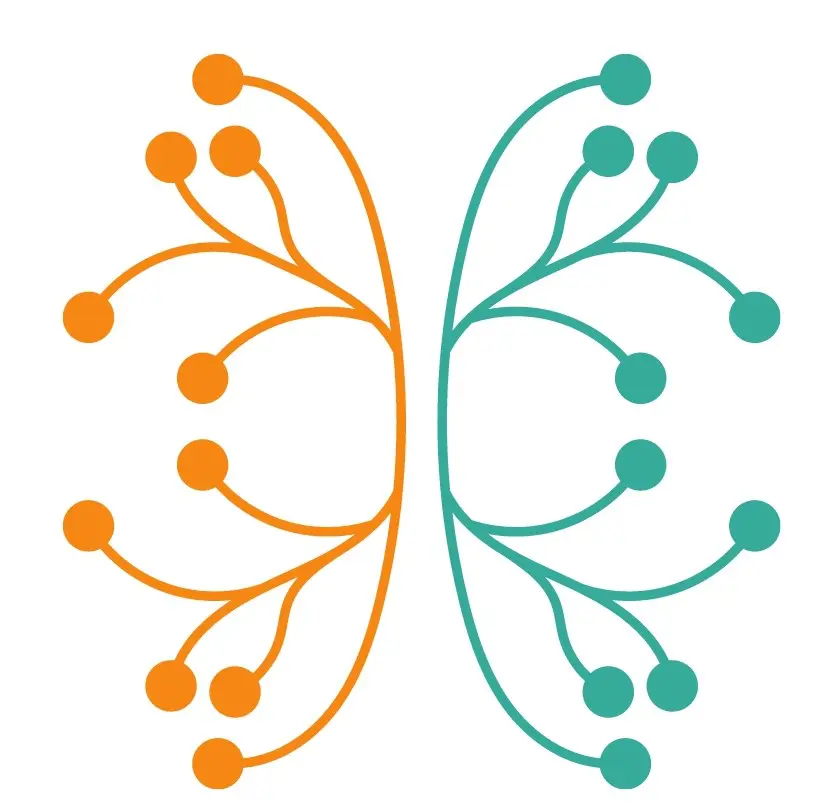
Vagus Nerve Stimulation
Sound meditation is thought to stimulate the Vagus nerve, a key player in the fight/flight response and all the associated involuntary bodily functions as per Dr. Porges’ Polyvagal Theory. Live sound meditation can shift the nervous system from an activated sympathetic nervous system to the parasympathetic nervous system’s state of “rest and digest” (Chandra et al 2013).
Brain Waves and Sound Meditation
Sound meditation has the ability to shift brainwaves from high-frequency gamma or beta waves into lower-frequency alpha and theta waves. As noted on the graphic, alpha waves are associated with a calm but alert mental state, while theta waves are even slower and correspond to deep relaxation, meditative state.
Individuals with chronic anxiety and stress are often “locked in” to a high level of activation on the flight-fight threat response system. Sound meditation can assist in inducing calm and promoting balance within the nervous system to reduce overall stress, and promote psychological well-being.
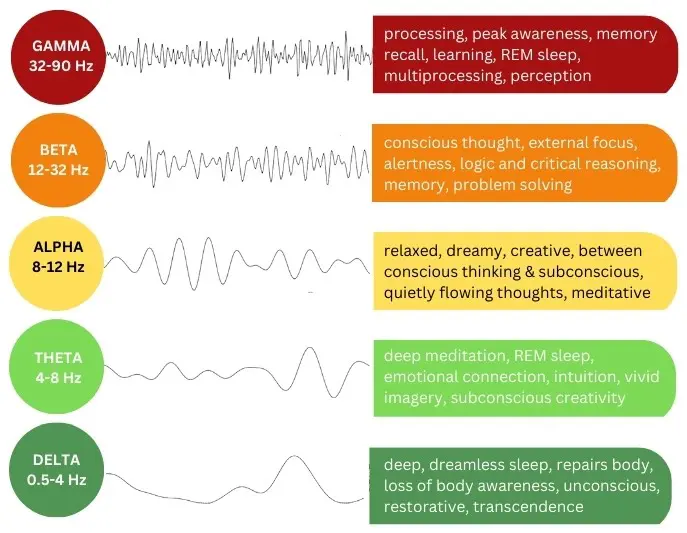
What to Expect

- The environment will be prepared to promote relaxation using soft lighting, mats, cushions, eye masks, and blankets to create a comfortable resting place on the floor or in a cozy chair.
- Living Audio is mindful of providing a trauma-informed approach where participants have full self-advocacy, understand what will be happening (e.g. movement with sound in the room) and is responsive to individual needs.

- The mindset going into sound meditation is important. The group will be led through some gentle stretching and breathwork to help transition the mind and getting grounded before settling into place.
- With live music the sound waves and physical vibrations can be felt moving through the body. It will begin soft and gentle, with layers added using different instruments or sounds and modulating the intensity in a planful way for that specific group and session.

- A typical sound meditation lasts 45-60 minutes with plenty of time to “come back into the room” to reorient.
- Depending on the group and situation, there is time to reflect and share the experience with others. Participants are encouraged to hydrate post session and journal, or whatever serves them, about their personal thoughts and feelings.
Considerations
- Live sound meditation can be intense, especially with crystal bowls and gongs, and overstimulating for some. Living Audio is sensitive and responsive to participant needs and will adjust as needed the volume and nature of sounds.
- Sound meditation can be a deeply personal experience and may elicit emotional releases or tearfulness. On rare occasions, difficult feelings &/or memories may emerge. In these instances, individuals are encouraged to check-in with their therapist.
- Sound meditation may result in a non-ordinary state of consciousness, perhaps losing sense of time and/or place which can be disorienting. Time and space will be provided to allow you to be fully present before driving home.
- For those with significant conditions, such as epilepsy or serious mental health issues, are encouraged to discuss sound meditation with their provider(s) first.

Kimberly Kornegay
Kimberly has spent most of her life immersed in music. She is currently the lead singer for the Feral Cats band and previously worked as a percussionist and vocalist for various traveling bands. After retiring, Kimberly combined her love of music with her desire to help others by facilitating sound meditations.
Since receiving her first certification from VAST in 2023, she has led sound meditation sessions at women’s retreats, psychotherapy offices, mental health programs, and ketamine treatment retreats.
She continues to expand her expertise by training with Eric Linstrom of Resonance f Healing and is currently working towards her Level 1 certification from the Sound Healing Academy.
References
- Stanhope, J., & Weinstein, P. (2020). The human health effects of singing bowls: A systematic review. Complementary Therapies in Medicine, 51, 102412. https://doi.org/10.1016/j.ctim.2020.102412
- Panchal, S., Irani, F., & Trivedi, G. Y. (2020). Impact of Himalayan Singing Bowls Meditation Session on Mood and Heart Rate Variability. International Journal of Psychotherapy Practice and Research, IJPR, ISSN 2574-612X.
- Goldsby, T. L., Goldsby, M. E., McWalters, M., & Mills, P. J. (2017). Effects of singing bowl sound meditation on mood, tension, and well-being: An observational study. Journal of Evidence-Based Complementary & Alternative Medicine, 22(3), 401–406. https://doi.org/10.1177/2156587216668109.
- H. Hassan, Z. H. Murat, V. Ross and N. Buniyamin, "A preliminary study on the effects of music on human brainwaves," 2012 International Conference on Control, Automation and Information Sciences (ICCAIS), Saigon, Vietnam, 2012, pp. 176-180, doi: 10.1109/ICCAIS.2012.6466581.
- Chanda ML, Levitin DJ. The neurochemistry of music. Trends Cogn Sci. 2013 Apr;17(4):179-93. doi: 10.1016/j.tics.2013.02.007. PMID: 23541122.

